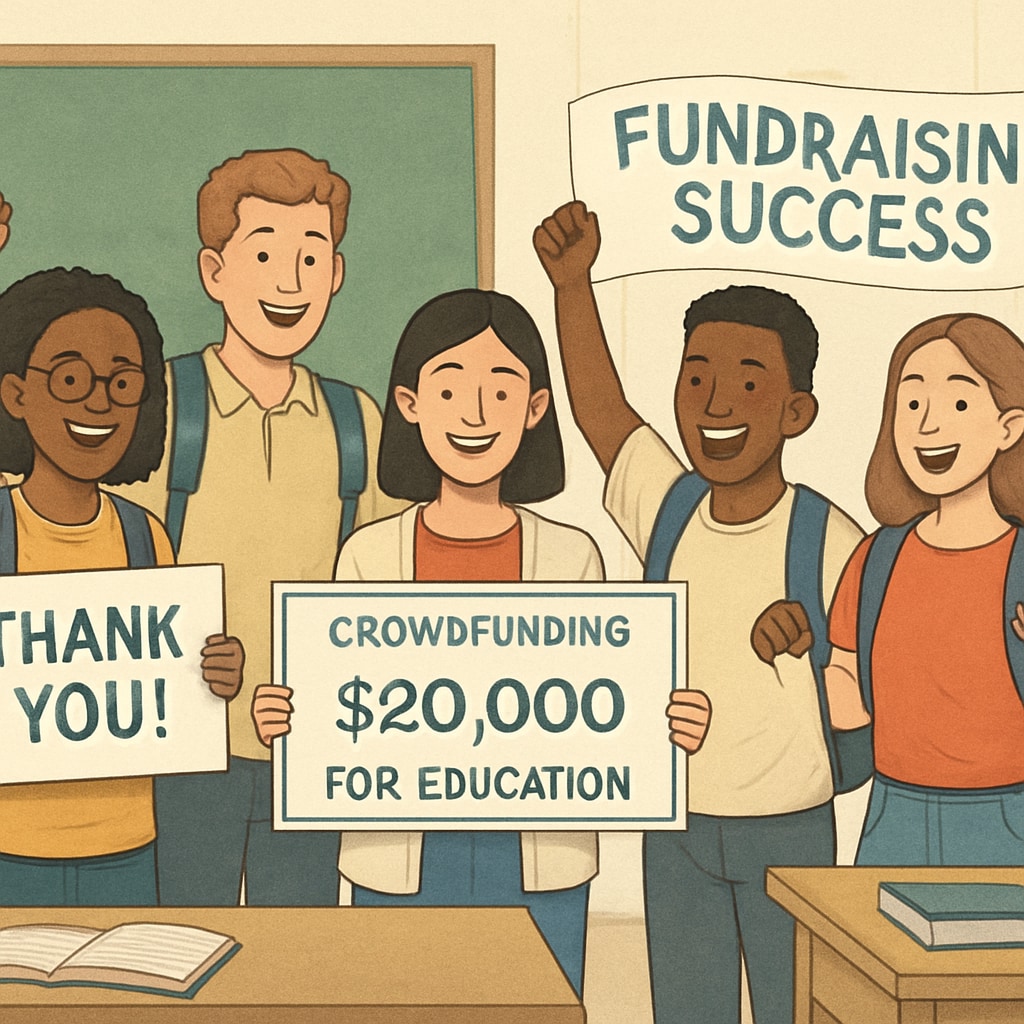For countless students worldwide, the dream of completing higher education is increasingly at odds with the growing reality of financial barriers. Rising tuition costs, limited scholarship opportunities, and economic hardships have forced many to seek alternative methods of funding their education. One such method is crowdfunding, where individuals share their personal stories and rely on the generosity of others to help cover their expenses. This phenomenon raises important questions: Can crowdfunding truly address the systemic inequalities in access to education, or is it merely a band-aid solution to a deeper societal issue?

The Rising Costs of Higher Education
The cost of higher education has been steadily increasing over the past decades, outpacing inflation and wage growth in many countries. For example, in the United States, the average tuition for public universities has risen by over 200% since the 1980s, according to Britannica. In other parts of the world, students face similar struggles as governments reduce funding for public universities, pushing more of the financial burden onto individuals and families. This economic pressure disproportionately affects students from low-income backgrounds, who often lack access to traditional forms of financial aid.
For these students, the inability to pay tuition or cover basic living expenses can lead to delayed graduations, part-time enrollment, or even dropping out entirely. Crowdfunding has emerged as a potential solution to these challenges, offering a platform for students to share their stories and connect with donors willing to contribute to their educational goals.
How Crowdfunding Works for Education
Crowdfunding platforms, such as GoFundMe and GiveCampus, allow users to create personalized campaigns to raise funds for specific needs, including tuition, housing, and textbooks. In the context of education, students often share compelling narratives about their academic aspirations and personal struggles to encourage donations. These platforms rely heavily on social media to amplify campaigns, making it easy for individuals to reach a global audience.
For instance, a student majoring in computer science might create a campaign titled “Help Me Build My Future in Tech,” detailing their achievements, career goals, and financial challenges. Supporters can contribute any amount, and campaigns often include updates to show progress, fostering a sense of community and accountability.
While crowdfunding has helped many students overcome financial hardships, it also has inherent limitations. Not all campaigns gain traction, and success often depends on the student’s ability to effectively market their cause. Additionally, the reliance on personal narratives can create a moral dilemma, as students may feel pressured to share deeply personal or even traumatic experiences to elicit sympathy from potential donors.

The Broader Implications of Education Crowdfunding
While crowdfunding offers a lifeline for some, it does little to address the root causes of educational inequality. The dependence on individual generosity highlights systemic gaps in existing financial aid systems and the lack of sufficient government support. Moreover, crowdfunding success often favors those with access to larger social networks or who can articulate their stories in ways that resonate with potential donors. This creates a paradox: the students most in need may struggle to gain visibility, perpetuating cycles of inequality.
To create a sustainable solution, experts advocate for structural reforms in education funding. For example, increasing government investment in public universities, expanding need-based scholarships, and implementing income-driven repayment plans are all potential strategies to reduce the financial burden on students. Additionally, introducing financial literacy programs at the K-12 level can help families better prepare for the costs of higher education.
Building a Fairer Future
Crowdfunding, while not a panacea, opens the door to conversations about equity in education. It highlights the resilience of students determined to overcome financial obstacles and underscores the importance of community support. However, long-term solutions require systemic change to ensure that no student is forced to rely on the goodwill of strangers to achieve their academic dreams.
As policymakers, educational institutions, and communities work toward creating a more equitable education system, crowdfunding can serve as a temporary bridge for students in need. In the meantime, platforms must continue to adapt, providing tools and resources to ensure that every campaign, no matter how small, has the potential to succeed.
Readability guidance: This article uses concise paragraphs, accessible language, and clear headings to enhance readability. Key points are summarized in lists where appropriate, and transitions ensure logical flow between sections.


